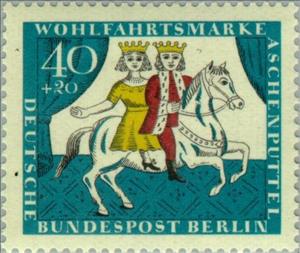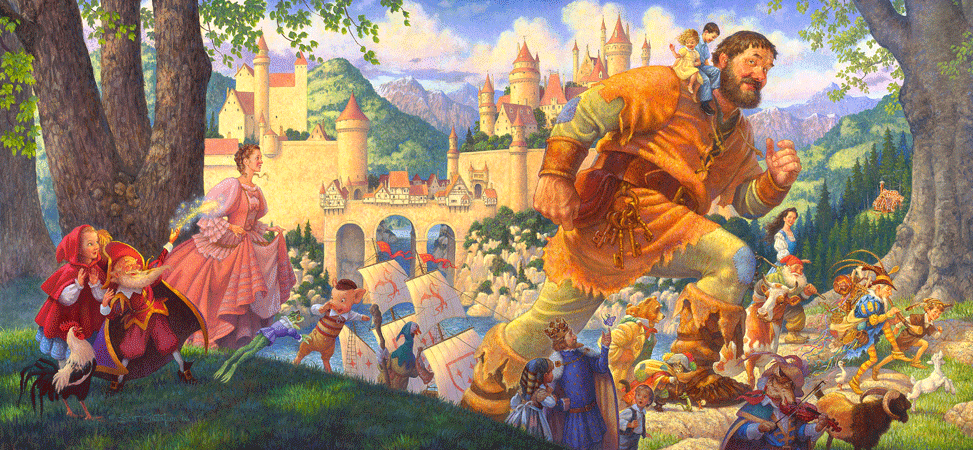Stamp: Scene from the fairy tale 'Cinderella' (Berlin 1965)
Scene from the fairy tale 'Cinderella' (Berlin 1965)
06 October (Berlin ) within release Welfare: Tales of the Brothers Grimm goes into circulation Stamp Scene from the fairy tale 'Cinderella' face value 40+20 German pfennig
| Stamp Scene from the fairy tale 'Cinderella' in catalogues | |
|---|---|
| Michel: | Mi:DE-BE 269 |
| Yvert et Tellier: | Yt:DE-BE 245 |
Stamp is square format.
Also in the issue Welfare: Tales of the Brothers Grimm:
- Stamp - Scene from the fairy tale 'Cinderella' face value 10+5;
- Stamp - Scene from the fairy tale 'Cinderella' face value 15+5;
- Stamp - Scene from the fairy tale 'Cinderella' face value 20+10;
- Stamp - Scene from the fairy tale 'Cinderella' face value 40+20;
Stamp Scene from the fairy tale 'Cinderella' it reflects the thematic directions:
The horse (Equus ferus caballus) is one of two extant subspecies of Equus ferus. It is an odd-toed ungulate mammal belonging to the taxonomic family Equidae. The horse has evolved over the past 45 to 55 million years from a small multi-toed creature, Eohippus, into the large, single-toed animal of today. Humans began to domesticate horses around 4000 BC, and their domestication is believed to have been widespread by 3000 BC. Horses in the subspecies caballus are domesticated, although some domesticated populations live in the wild as feral horses. These feral populations are not true wild horses, as this term is used to describe horses that have never been domesticated, such as the endangered Przewalski's horse, a separate subspecies, and the only remaining true wild horse. There is an extensive, specialized vocabulary used to describe equine-related concepts, covering everything from anatomy to life stages, size, colors, markings, breeds, locomotion, and behavior.
A fairy tale (alternative names include fairytale, fairy story, magic tale, or wonder tale) is a short story that belongs to the folklore genre.Such stories typically feature magic, enchantments, and mythical or fanciful beings. In most cultures, there is no clear line separating myth from folk or fairy tale; all these together form the literature of preliterate societies. Fairy tales may be distinguished from other folk narratives such as legends (which generally involve belief in the veracity of the events described) and explicit moral tales, including beast fables. Prevalent elements include dragons, dwarfs, elves, fairies, giants, gnomes, goblins, griffins, merfolk, monsters, talking animals, trolls, unicorns, witches, wizards, magic, and enchantments.
Animals are multicellular, eukaryotic organisms of the kingdom Animalia (also called Metazoa). All animals are motile, meaning they can move spontaneously and independently, at some point in their lives. Their body plan eventually becomes fixed as they develop, although some undergo a process of metamorphosis later on in their lives. All animals are heterotrophs: they must ingest other organisms or their products for sustenance.



